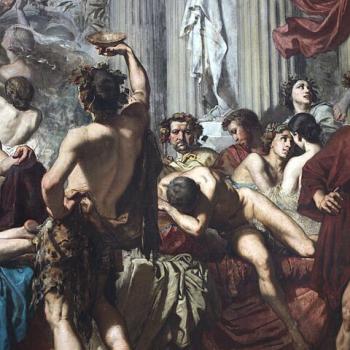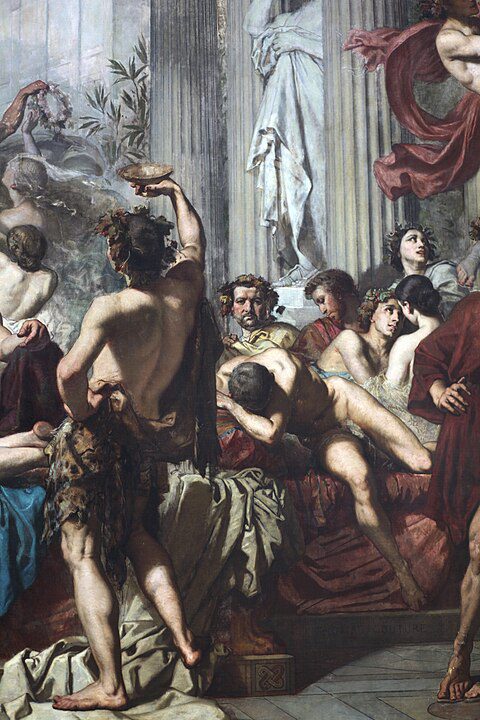When making conversation, we were always told, don’t talk politics or religion. Stick to safe subjects like sports or the weather.
The reason for that is that politics and religion are divisive. Not everyone agrees about them. If the person you are talking to is a friend who already agrees with you, fine. But when making social chit-chat with someone you don’t know, it’s best to talk about non-controversial topics. Liberals and conservatives, Christians and atheists can all enjoy and have common ground with sports. And everybody is subject to the weather (cf. Matthew 5:45).
But today a conversation about sports can get into teams celebrating Pride Month, athletes protesting during the National Anthems, league policy about China, and boycotts from either the left or the right. Conversations about the weather can lead to arguments about climate change and global warming.
The point is, it’s hard to find “safe topics” any more. Virtually everything has become charged with politics and religion.
In a response to billionaire Mark Cuban’s claim that “woke capitalism”– in which corporations take public stands in favor of progressive causes–is “good for business,” Republican presidential candidate Vivek Ramaswamy had this to say:
“When those businesses wade into social disputes, not only is that often bad for business, just look at what happened to Bud Light, look at what’s happening to Target. . . .But more importantly, it’s bad for our civic culture in our country, because what we need is apolitical spaces that bring people together.”
Exactly! We need “apolitical spaces.” The lack of them is why our nation has become so polarized. There have always been sharp political disagreements in this country. But there have also been apolitical spaces in which Americans, for all of their differences, have found common ground, creating a sense of national unity.
Americans celebrated national holidays and appreciated our history. Everyone was grateful for our constitutional legacy of political and personal freedom, with individual rights and a democratically-elected government. During the Cold War, both Democrats and Republicans opposed communism.
The public schools were mostly apolitical. So were businesses. So were movies, television, and other forms of entertainment. So was the military. So were churches, with Democrats and Republicans worshipping together in the same theologically conservative churches.
Now these are all political minefields. Celebrating the Fourth of July has become an occasion for vehement arguments between those who vilify the founders as slaveholders and those who defend them for building a free society that eventually freed the slaves. American history, for many, is something to be ashamed of. Both the left and the right are criticizing our “liberal” political system, with its freedoms and democracy.
Schools, businesses, the entertainment industry, even the military have seemingly “gone woke” to one degree or another, sparking furious reactions from the other side. Churches now sort themselves out between those that push for progressive causes and those that steadfastly resist them.
The catalyst for this polarization and its spread throughout our institutions seems to be sex–embracing feminism, the LGBTQ+ movement, transgenderism, and support for abortion–which the progressives have tied together with racial civil rights into an intersectional package.
So we might think that sex has become politicized. But how did that happen? To be sure, certain laws affect these things–anti-discrimination laws, same-sex marriage, the overturn of Roe v. Wade, etc.–and those were political. But most of those issues, rightly or wrongly, have been settled.
The issues now seem to be not so much political as attitudinal. What is your attitude towards the LGBTQ+ movement? Companies display their support while some of their customers display their opposition. With no real political issue in question, what we have are moral issues. Those often come down to religious beliefs.
So not only does politics permeate religion, religion, of one kind or another, permeates politics.
Are there any “apolitical spaces” left? How might we bring some of those back? Are there any “areligious spaces”?
In India, for example, the concept of “secularism” by no means repudiates religion, as Western secularism tends to, but seeks to create “areligious spaces,” in the government particularly, so that people of divergent religions can come together into a political unity. That is arguably what the American founders had in mind with the “separation of church and state.” Is that kind of secularism possible or desirable today in the U.S., when secularism has come to mean opposition to religion? How might Luther’s doctrine of the Two Kingdoms help us sort out some of these issues?
Photo: Vivek Ramaswamy by Gage Skidmore from Surprise, AZ, United States of America, CC BY-SA 2.0 <https://creativecommons.org/licenses/by-sa/2.0>, via Wikimedia Commons


















